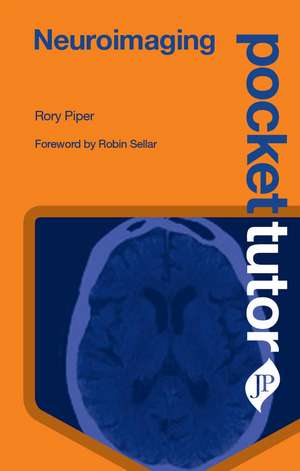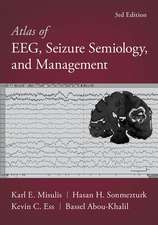Pocket Tutor Neuroimaging
Autor Rory Piperen Limba Engleză Paperback – 31 mar 2018
Topics reflect information needs stemming from today’s integrated undergraduate and foundation courses:
- Common presentations
- Investigation options (e.g. ECG, imaging)
- Clinical and patient-orientated skills (e.g. examinations, history-taking)
Key points
- Highly-affordable price and convenient pocket-size format
- Logical, building-block approach to content: initial chapter on the principles of neuroimaging, followed by focus on understanding normal and abnormal images. Subsequent chapters describe specific disorders
- Clinical disorders are illustrated by high-quality images with accompanying text that clearly identifies the defining features of the image
- Focuses on the conditions medical students and junior doctors are most likely to see
Preț: 145.28 lei
Preț vechi: 152.92 lei
-5% Nou
27.81€ • 30.22$ • 23.37£
Carte disponibilă
Livrare economică 31 martie-14 aprilie
Livrare express 15-21 martie pentru 17.58 lei
Specificații
ISBN-10: 1909836575
Pagini: 280
Dimensiuni: 138 x 178 x 12 mm
Greutate: 0.21 kg
Ediția:1
Editura: JP Medical
Colecția Jaypee UK
Locul publicării:London, United Kingdom
Notă biografică
Rory Piper MBChB
Academic Foundation Doctor, Cambridge University Hospitals NHS Foundation Trust, Cambridge, UK
Cuprins
Chapter 1 First principles
Chapter 2 Understanding normal images
Chapter 3 Understanding abnormal images
Chapter 4 Head injury
Chapter 5 Cerebrovascular disease
Chapter 6 Neurodegenerative disease
Chapter 7 Inflammatory disease
Chapter 8 Infections
Chapter 9 Brain tumours
Chapter 10 Spinal injuries
Descriere
Titles in the Pocket Tutor series give practical guidance on subjects that medical students and foundation doctors need help with ‘on the go’, at a highly-affordable price that puts them within reach of those rotating through modular courses or working on attachment.
Topics reflect information needs stemming from today’s integrated undergraduate and foundation courses:
- Common presentations
- Investigation options (e.g. ECG, imaging)
- Clinical and patient-orientated skills (e.g. examinations, history-taking)
The highly-structured, bite-size content helps novices combat the ‘fear factor’ associated with day-to-day clinical training, and provides a detailed resource that students and junior doctors can carry in their pocket.
Key points
- Highly-affordable price and convenient pocket-size format
- Logical, building-block approach to content: initial chapter on the principles of neuroimaging, followed by focus on understanding normal and abnormal images. Subsequent chapters describe specific disorders
- Clinical disorders are illustrated by high-quality images with accompanying text that clearly identifies the defining features of the image
- Focuses on the conditions medical students and junior doctors are most likely to see














